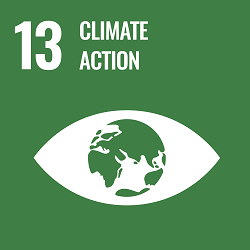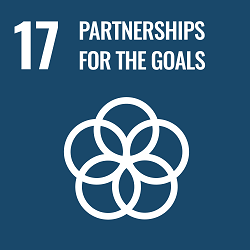Turning ambitious net zero plans into action
As we reach a pivotal point on our net zero pathway, James Dixon-Gough, Head of Net Zero Delivery, gives us an update on progress so far and how our staff and students can support.

It’s been a little over three years since our pathway to deliver net zero emissions as part of the University’s Climate Plan was first published. But unless you’ve been following our progress then you might be forgiven for wondering what we’ve been doing!
There’s an irony that when it comes to work on our buildings, if people don’t notice anything happening then that’s often a sign of a job well done. But we know that how the University responds to climate change is really important to our staff, students and to our community outside of the University.
Building a deliverable plan across our estate
Since the pathway was approved there’s been a huge amount of work going on across the Facilities Directorate, collaborating with mechanical and engineering partners Buro Happold and CPW as well as academic colleagues to turn our ambitious commitment into a deliverable plan for our estate.
And we’re at a pivotal point right now, where we’re about to move from extensive planning and feasibility studies into the design and delivery phases for two major projects in our Net Zero Delivery Plan:
- a project to upgrade the ventilation system in the Worsley building to a ‘heat recovery’ system that captures waste heat to reduce our heating needs, and
- a project to build a new energy centre to heat the Engineering cluster of buildings using electricity.
Both of these projects have energy efficiency at their core – reducing how much energy we need to use is not just good for the climate, but will also help to manage our future energy costs and provide us with greater resilience to the kinds of energy market shocks we’ve seen in recent years.
A new lead contractor has been appointed, Vinci, who are working on developing the detailed plans for these projects. Although we’re still a little way off being able to share those plans in more detail, rest assured that as soon as we can, we will.
Positive results from geothermal test drilling
Excitingly, we’ve had really positive results from the geothermal test drilling that took place last year. The results support the development of geothermal heat to help fuel our heating systems on campus and work is now underway to design a new energy centre for the Engineering cluster and Henry Price halls of residence.
We’ve also identified that we can incorporate the Bragg building into this cluster, which will reduce estate-based emissions further than originally forecast for this project.
The geothermal test site is now actively operating as a Living Lab research project and has already created opportunities for research, teaching and the wider city region. It’s enabled the team from Geosolutions Leeds to secure new research funding, and they’ve also met with other universities, councils and landowners who are looking to understand how what we’ve learnt in Leeds can help them on their own decarbonisation journeys.
Progress across the programme
Just before Christmas we placed a crucial order with Northern Powergrid for the increased electricity supply that we’ll need on campus to be able to decarbonise our estate.
Two thirds of the emissions that we need to reduce come from how we heat and power our buildings, so the development of these projects is absolutely critical to reaching our targets.
We’re working alongside the Campus Reimagined programme to look at how we can embed climate resilience – how we deal with increased hot weather and rainfall - into our future campus masterplan. And developing our approach for how we will balance any remaining emissions that we can’t reduce by 2030.
We’re also collaborating with our People and Change teams and the Just Transition Task Force to ensure that we are thinking about how our plans will affect our community – from how we minimise the impact on those who use the buildings on a day to day basis, through to how we ensure our staff have the skills they need to be able to maintain the new systems.
Delivering impact in challenging times
This is all great news, but it hasn’t all been plain sailing. We’re working against a context of rising costs and financial pressures which mean we have to be really careful about how we’re investing in the programme.
We need to ensure that the money that has been committed to delivering net zero works as hard as it can to reduce our emissions, whilst considering the impact on the ongoing running costs of our estate and looking to create new opportunities for our staff and students.
These major infrastructure projects take time to deliver, so we won’t see an impact on our headline emissions reporting for a couple of years. Whilst we’re confident we’re on the right track to tackle our emissions, we also know that climate change is accelerating and we need to act quickly.
Where our staff and students can help
Staff have already embraced our annual winter and easter shutdown campaigns which have led to around 25% reduction in energy use, and sustainable changes in procurement have shown great potential to reduce the climate impact of our supply chain.
Whether it’s being mindful of energy efficiency in your workspaces or taking the opportunity to walk or cycle for some or all of your commute; reducing waste by thinking carefully about what you buy and use in your workplace, or taking your next business trip by train - all these seemingly small actions can have a big impact if we embrace them together as a community.
Students and staff can find out more about the Delivering Net Zero programme, the other six climate principles, and how they can get involved on the Climate Plan Sharepoint Hub (University login required).
United Nations Sustainable Development Goals
We use the United Nations Sustainable Development Goals (SDGs) as a framework to guide our activity. Our pathway to net zero is linked to the following SDGs:
- Goal 13: Climate action
- Goal 17: Partnerships for the goals
Find out more about our impact on the SDGs.


